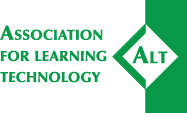Brailsford, T. J. and Davies, P. M. C. and Scarborough, S. C. and Trewhella, W. J. (1997) Knowledge tree: Putting discourse into computer‐based learning. Association for Learning Technology Journal, 5 (1). pp. 19-26. ISSN 0968-7769
|
PDF
Available under License Creative Commons Attribution Non-commercial No Derivatives. Download (707kB) | Preview |
Abstract
Most CBL materials currently in use model only the declarative aspects of the learning process. If such courseware is used without careful planning, this can be dangerous because one of the most fundamental aspects of education is the dialogue that occurs between teachers and the students. Traditionally, this has taken place in informal discussions as well as in formal small‐group learning sessions such as the conventional tutorial. However, as the student‐staff ratio increases, so does the opportunity for this type of personal dialogue decrease. Modern networking technology offers a huge potential to add discourse to CBL, but there are many pedagogical problems involved with the intrinsically ephemeral and anarchic nature both of the Internet and of most conferencing or bulletin‐board systems. In this paper we describe a software system called Knowledge Tree (KT) which we have developed to address some of these issues. KT combines a hierarchical concept‐oriented database functionality with that of a Usenet‐style bulletin board Using this, a knowledge garden may be developed for any subject area. These each contain a hypermedia database of frequently asked questions, together with answers provided by subject experts. There is provision for inter‐student discussions of problems and issues. When students ask new questions these are automatically emailed to a relevant subject expert (determined by a subject‐specific concept thesaurus). The answer is then placed in the database which eventually grows to become a valuable teaching resource. KT is discipline‐independent as the concept thesaurus can be changed to encapsulate any domain of knowledge. We have used it in support of conventional lecture courses, as an important component of a multimedia course, and for general IT support. These examples illustrate the role that this system can play both in basic information provision, and in facilitating the discussion of deep issues.
| Item Type: | Article |
|---|---|
| Subjects: | L Education > LB Theory and practice of education L Education > LC Special aspects of education > LC1022 - 1022.25 Computer-assisted Education |
| Divisions: | ALT-J Journal |
| Depositing User: | Justin Smith |
| Date Deposited: | 10 Apr 2009 09:51 |
| Last Modified: | 04 Apr 2011 08:49 |
| URI: | http://repository.alt.ac.uk/id/eprint/227 |
Actions (login required)
 |
View Item |
